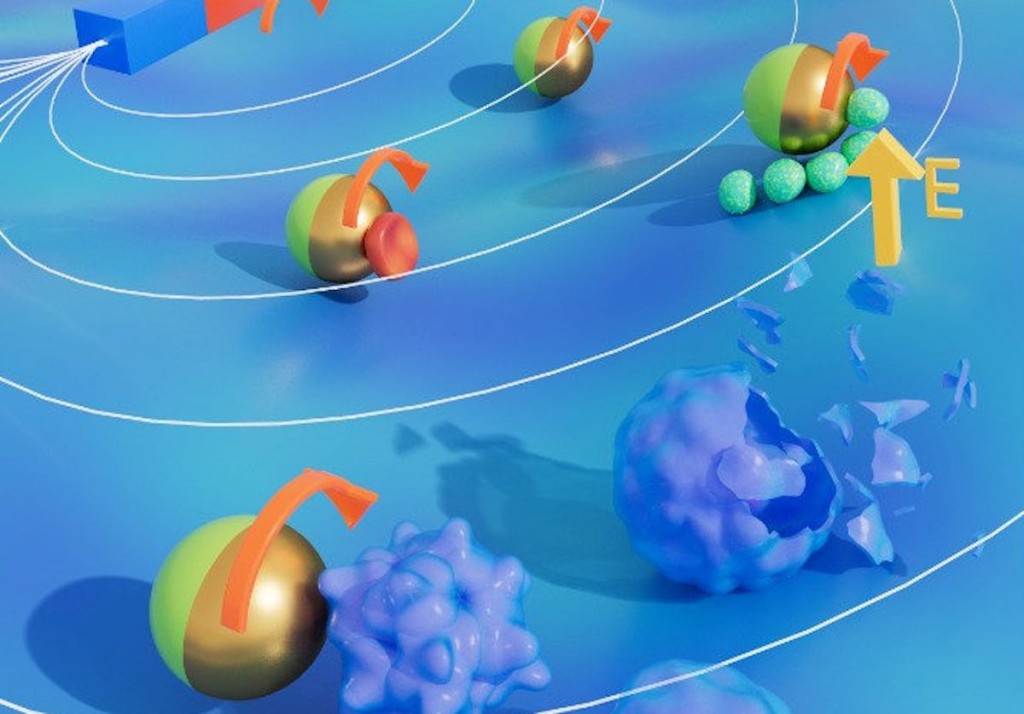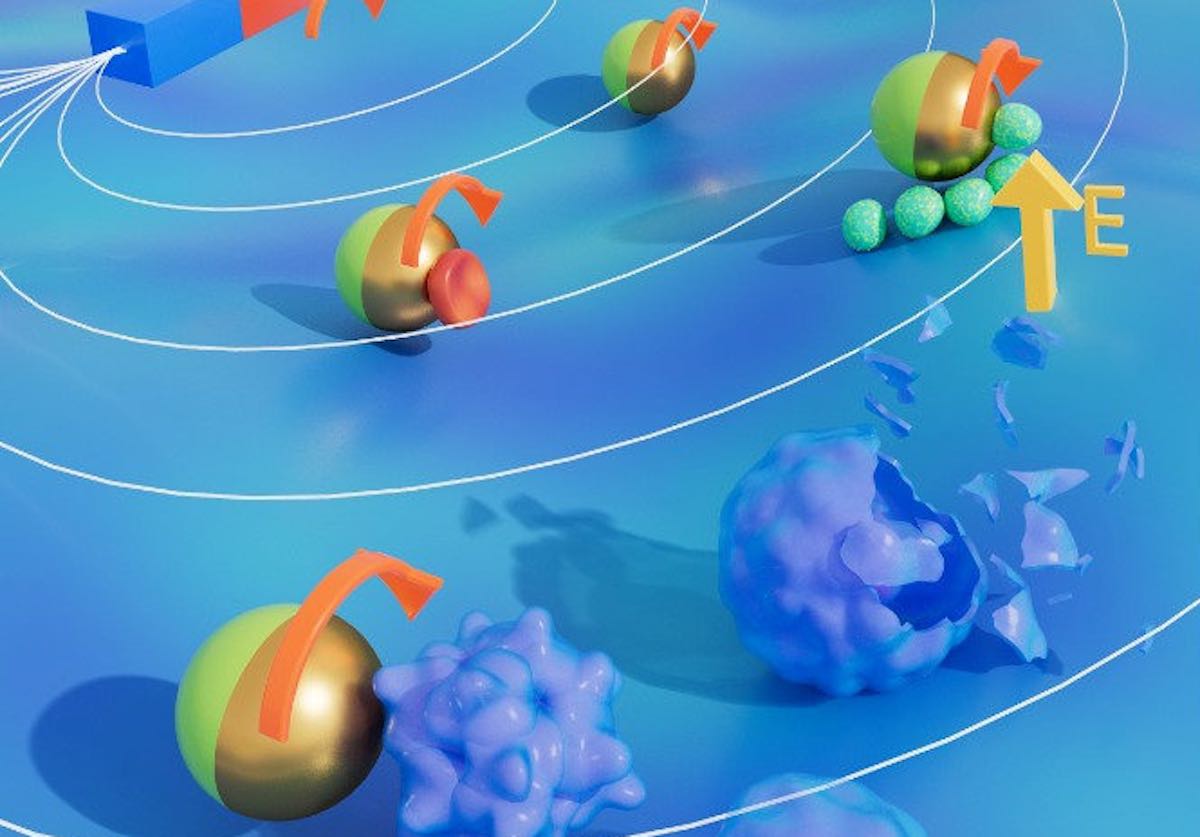
A tiny controllable robot acts as a real-life ‘Pac-Man’—identifying and gobbling up damaged cells in living things.
Scientists say the minuscule robot, which is seven times smaller than the width of a human hair, can identify, capture, and transport cells.
Another benefit is that it can be navigated and controlled both magnetically and electrically. It can also distinguish between different types of cells, identifying whether they are healthy or dying.
Scientists from Tel Aviv University in Israel say their new micro-robot could be used to administer drugs—and even identify and treat cancer.
The innovative technology was developed by Professor Gilad Yossifon and his team of researchers in the School of Mechanical Engineering and Department of Biomedical Engineering.
The microbots, also known as ‘micro-motors’ or ‘active particles’, are tiny synthetic particles the size of a biological cell that can move around and perform actions either automatically, or by being controlled by an operator.
RELATED: One Stem Cell Injection to Target Inflammation Slashed Risk of Heart Attack and Stroke By 58%
Prof. Yossifon says the idea to make tiny robots able to move autonomously was inspired by ‘biological micro-swimmers’, such as sperm.
To demonstrate the ability of their robot, the team used it to capture single blood and cancer cells, and a single bacterium.
The results, published in the journal Advanced Science, proved the microbot had the ability to distinguish both between cells that are healthy and those damaged by drugs, and between those dying unnaturally and those dying in a natural process.
After successfully identifying the desired cell, the micro-robot then captures and escorts it to where it can be further analyzed.
CHECK OUT: New Brain Implant Device Could Restore Function in Paralyzed Limbs
Another important feature is the robot’s ability to identify target cells which aren’t labelled or pointed out as being noteworthy. It can self-identifying cells and their health conditions using an internal sensing mechanism based on the cell’s electrical properties.
“In addition, the micro-robot has an improved ability to identify and capture a single cell, without the need for tagging, for local testing, or retrieval, and transport to an external instrument,” said Yossifon.
“This research was carried out on biological samples in the laboratory for in-vitro assays but, the intention is to develop in the future micro-robots that will also work inside the body—for example, as effective drug carriers that can be precisely guided to the target.”
The researchers add that the hybrid nature of the microbot will be beneficial in physiological environments such as tests carried out in a liquid, where electrical guidance techniques are less effective.
MORE: Third Case of HIV Cured 10 Years After Treatment of the ‘Düsseldorf Patient’
“This is where the complementary magnetic mechanism come into play, which is very effective regardless of the electrical conductivity of the environment.”
Lauding the success of his team’s groundbreaking study, Prof. Yossifon hailed the microbot’s future usage in diagnosing and treating diseases:
“Among other things, the technology will support the following areas: medical diagnosis at the single cell level, introducing drugs or genes into cells, genetic editing, carrying drugs to their destination inside the body, cleaning the environment from polluting particles, drug development, and creating a ‘laboratory on a particle’—a microscopic laboratory designed to carry out diagnostics in places accessible only to micro-particles.”
This innovative area of technology is developing rapidly, a promising tool for a wide variety of fields, including the environment and research.
SEND the Breakthrough Bot Into Your Social Media Newsfeed by Sharing…




















